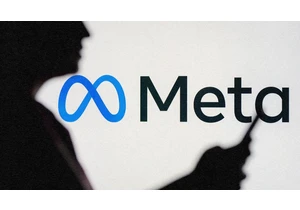The AI search firm Perplexity routinely lets users try out state-of-the-art large language models on its site, but the company moved quickly to put Chinese company DeepSeek’s new R1 model front and center in its user interface. That offers users a chance to find out what the buzz is all about, without sending their data through the DeepSeek app, which is hosted in China.
While some AI thought leaders such as Thrive Capital’s Josh Kushner, Scale AI’s Alexander Wang, and Anduril’s Palmer Luckey hurried to debunk or downplay DeepSeek’s achievements, Perplexity’s CEO Aravind Srinivas believes the Chinese company’s models are something special. “In the past few years, there have been a handful of revolutionary moments in AI that have transformed the landscape,” Perplexity cofounder and CEO Aravind Srinivas wrote in a subscriber email Tuesday. “I wholeheartedly believe that this is yet another moment.”
Users of Perplexity’s free and premium tiers can now choose to use DeepSeek via a menu button within the search bar. (Users can also select OpenAI’s o3 mini model.) “It’s one of the core models,” says Perplexity chief business officer Dmitry Shevelenko. “And what’s really neat about it is we’ve also developed a user interface . . . where you can actually see the chain of thought, so you can actually see how the model is thinking in real time, and that’s something that was never possible before.”
Because DeepSeek operates within the People’s Republic of China’s regulatory framework, the company had to prevent its models from talking about politically sensitive topics, such as the Tiananmen Square protests. Perplexity was able to remove those guardrails from the open-source version of DeepSeek-R1.
Perplexity also says any user data shared with the chatbot stays with the company’s servers in the U.S. and Canada; nothing is shared with DeepSeek or China.
Of the models available on Perplexity, DeepSeek R1 is unique in that it shows the “chain of thought” the LLM followed to reach an answer. Some of the innovations the DeepSeek researchers put into its models were driven by a need to economize on computing power. The company said it trained its models, for example, using less-powerful Nvidia H800 chips after the U.S. chip bans cut off access to Nvidia’s most powerful GPUs. The end result was the creation of models that show state-of-the-art intelligence while requiring far less computing power than comparable models to run.
That’s good for Perplexity. “There are efficiencies,” says Shevelenko. “I mean, I think we’re still too early to know the exact inference cost breakdown, but just the fact that it’s open-source and you’re not paying the private model provider, that’s already the major efficiency.”
Connectez-vous pour ajouter un commentaire
Autres messages de ce groupe

Every now and then, you run into a tool that truly wows you.
It’s rare—especially nowadays, when everyone and their cousin is coming out with overhyped AI-centric codswallop tha

Tesla released its quarterly earnings report on Tuesday, its first since the company’s chief executive, Elon Musk, took up residence in the Trump White House and immediately began trying to fire f

There’s never a dull day in the world of weight-loss medication. This week brought new restrictions on compounded GLP-1 medication, the cheaper, copycat versions of brand-name drugs that tel

In December 2023, I wrote an article exploring Apple CEO Tim Cook’s most likely successors, because t

“Meta profits, kids pay the price,” was the message delivered by dozens of grieving families at the doors of Meta’s Manhattan office on Thursday.
Forty-five families traveled from

The world’s auto industry is getting a shake-up from Chinese automakers that

There’s Blue Sky and then there’s Bluesky.
Blue Sky, a paper goods company
